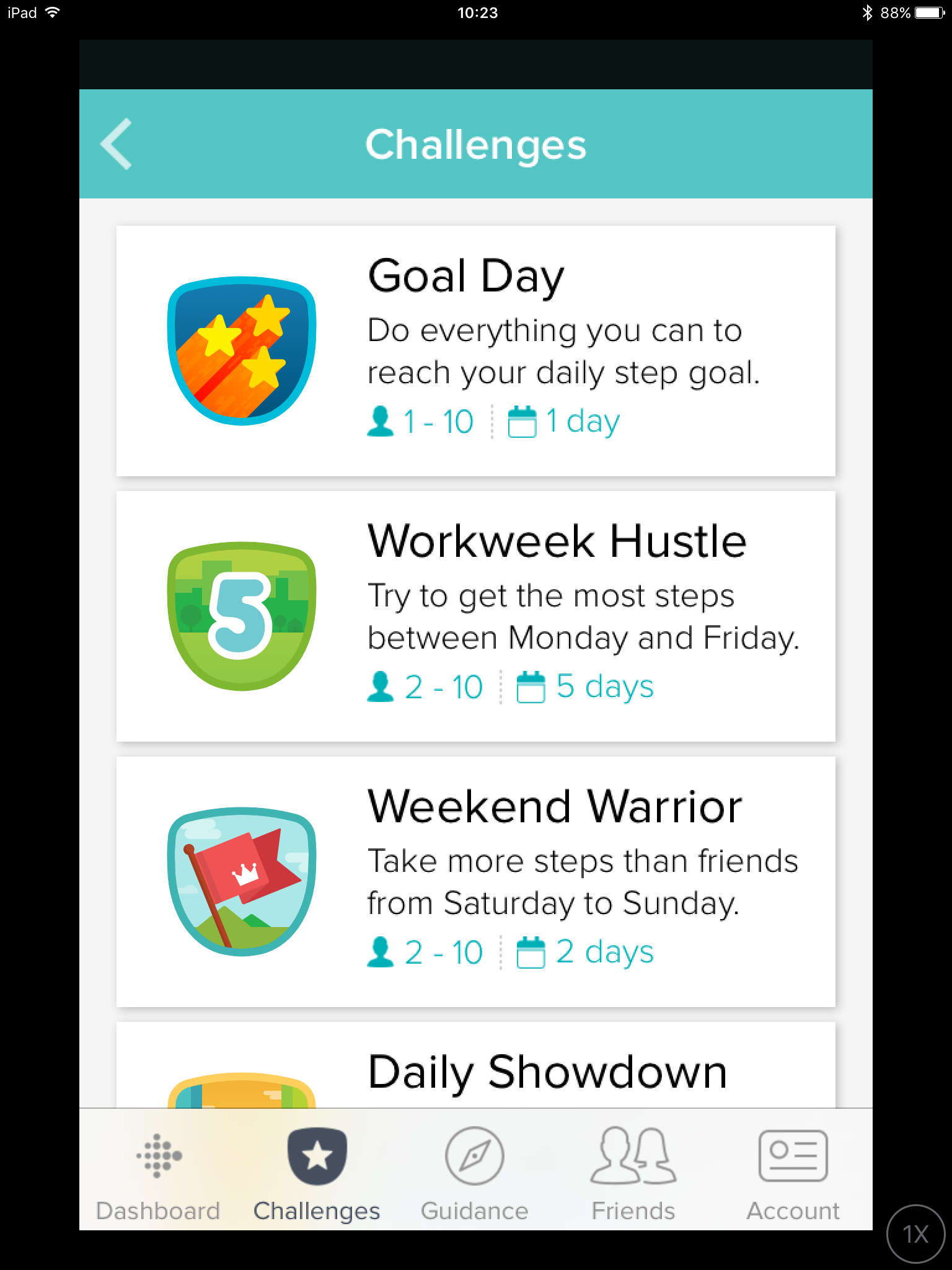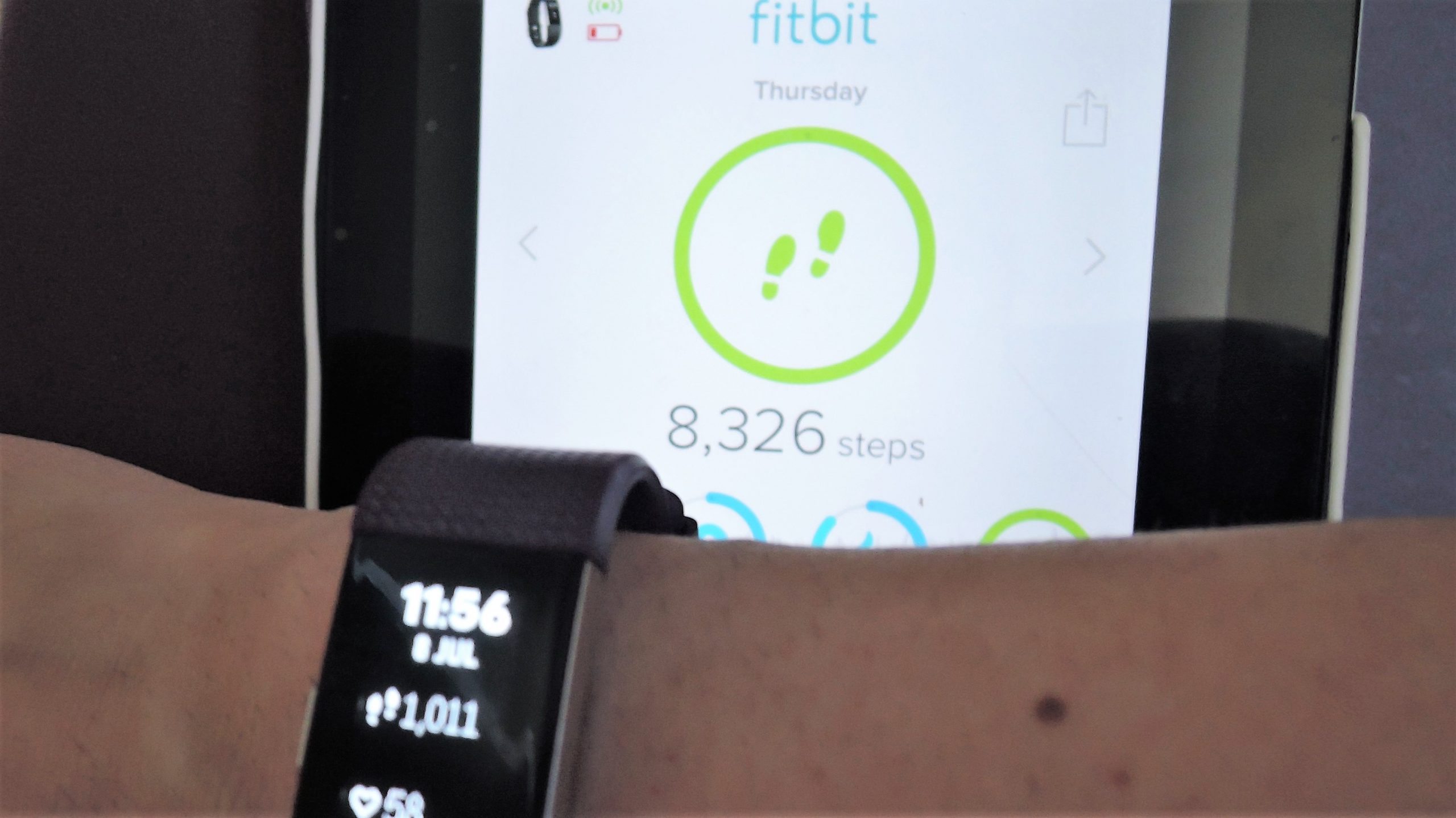It seems that everyone these days has a Fitbit, but I’ve had two people recently mention that they’re thinking about getting one for either themselves or as a gift and they asked me for my opinion. I thought I’d give a full review of my Fitbit Charge 2, in case you’re in the market for one! FYI I’ve had mine since Christmas 2016.
What is a Fitbit?
A Fitbit is a brand name activity and lifestyle tracker. I think of it as an entry-level exercise monitor for the average person. If you’re heavily into sports/training, this might not be the best option for you. If you want a general sense of your steps, calories, heart rate, and want the option of tracking individual workouts, then it might be perfect!
What can the Fitbit Charge 2 do?
You wear it as a wrist watch so you get the time/date (display customisable). It’s based off of an app platform that you initially download to your smartphone/tablet/desktop, and this is where all of your data is displayed over time.
Features:
It has a side button which illuminates the screen and allows you to cycle through different displays (I have 5 programmed, but I think you can modify this).
Tapping the screen illuminates the display, and there is an optional wrist-twist motion to activate the screen.
Home Display on the Fitbit (customisable):
- Date/time
- Tracks steps – You can set your own steps target, or if you have it set according to weight goal, it auto-adjusts the steps target. I aim for 10,000 steps a day, but my target is set according to my weight goal, which is somewhere around 8,000 steps.
- Heart rate- Displays your rate in real-time. It’s most helpful within the exercise section as it tells you whether you’re in the fat burn, cardio, or peak range. These heart rate zones are saved in the app within each recorded exercise, so you can track and compare your workouts. On the app, it shows your resting bpm, which allows it to theoretically tell you how fit you are. This is also used to calculate your weight management goals.
Tapping on Home Display 1x:
- Tracks mileage (I have it in km). If you have your Fitbit synced to your smartphone, then you can have location services and Bluetooth turned on and use it to track your distance when you go running etc. using GPS (you need to bring your phone with you, though). Otherwise, it multiplies your walking steps by walking stride length, estimated from your gender and height. It can also estimate by tracking one of your runs using GPS, and then evaluates that data to get your stride length. I have my Fitbit synced to my tablet, so I rely on the estimated stride length.
- Calories burned – This is based off your basal metabolic rate and it resets at midnight with the calories you’ve already burned just from your BMR. My calories burned target is set according to a weight loss goal (which is unrealistic and is why I rarely reach my calories burned mark). It has a little tracker bar so you can estimate your progress throughout the day.
Tapping 2x:
- Active minutes – These are periods of moderate activity done for 10 min or more. I don’t really use this function.
- Hourly Activity – Hours in the day when you’ve walked 250+ steps. These are displayed in a dotted graph, there is a clock display to show your most active hours, and it details your stationery period, and your all day breakdown. This is the most depressing feature if you’re an office worker with a 4 hr daily bus commute (i.e. sitting all day).
Display 2:
- I have it set to my heart rate. The first one is my current rate and tapping the display 1x brings up my resting bpm.
Display 3:
- This is my exercise function (and my favourite feature).
 You tap the screen to cycle through the different pre-set exercises, which are customisable from the app. Mine are set to: run, weights, workout, bike, interval workout, walk, and yoga. I use workout the most. Once you have your option displayed, you hold down the side button and it starts the timer. This will keep a running tally of your time, calories, heart rate, and distance and pace (if applicable). You press the side button to pause, and hold it down to finish your workout. You can preset the Fitbit to auto-recognise certain workouts so you don’t have to constantly press to record. You can also manually enter in workouts in the app if you aren’t wearing your Fitbit.
You tap the screen to cycle through the different pre-set exercises, which are customisable from the app. Mine are set to: run, weights, workout, bike, interval workout, walk, and yoga. I use workout the most. Once you have your option displayed, you hold down the side button and it starts the timer. This will keep a running tally of your time, calories, heart rate, and distance and pace (if applicable). You press the side button to pause, and hold it down to finish your workout. You can preset the Fitbit to auto-recognise certain workouts so you don’t have to constantly press to record. You can also manually enter in workouts in the app if you aren’t wearing your Fitbit.
Display 4:
- A stop watch
Display 5:
- Relax – You hold down the button and it tells you to be still and take slow, deep breaths for 2 minutes, and it yells at you if it senses movement. It also vibrates when you need to inhale and exhale; in theory a cool function, although I find it more irritating than calming.
What I use my Fitbit for:
- Step tracker
- Workouts and # workouts per week goal
- Heart rate
- Timing and calories burned during workout
- Weight management

What features I don’t use:
- Buddy system in the app, though accountability is great!
- Challenges and step-based Adventures
- Water intake (I drink loads of water already)
- Food
- Sleep
Pros:
- Comes in a range of wrist sizes. The main reason I asked for my Fitbit was because my current exercise watch strap was too large and it didn’t record my heart rate properly.
- Interchangeable straps
- Large display
- Good battery life (charge 1-2x week)
- Accurate data
- Can manually enter in data if you forget to wear your Fitbit or forget to record an exercise
- Auto recognises select exercises
- Easy-to-use interface
- Weekly email updates for your results from the previous week with up/down arrows so that you can compare your fitness over time
- Has charming greetings when you put it on like ‘how you doin?’ and ‘BOOM!’ when you complete your workout. Also vibrates and has a rocket ship/fireworks when you hit goals, which frequently startles me at the end of my day.

Cons:
- NOT WATERPROOF– You can’t wear it in the shower and forget about swimming! This is definitely the biggest drawback to the Fitbit.
- If you have the wrist-twist for display illumination function on, then wearing your Fitbit to track your sleep is annoying if, like me, you flail in the night and wake up when there is any light in the room. I’d love to know my sleep patterns, but the bloody display wakes me up every time I turn over!
- The charger can be a bit temperamental and you need to get the connection just right, or it won’t charge.
- In the food diary section for calories consumed (on the app), it gives you your daily target, and a bar chart with calories in verses out, which is great, but entering in my nutrition is a slippery slope for me personally to eating issues, and it’s also time-consuming. Moreover, the food selection in the app isn’t as comprehensive and My Fitness Pal.
- Occasional faults – My Fitbit once buzzed and said I met my calorie target when it was sitting on the bedside table and I had been in bed all day with the flu.
I’m struggling at the moment adjusting to a work schedule where I’m out of the house 12 hours a day and sitting for most of that time on the bus or at the office (read more about my fitness journey here). I only have time to workout 2 days a week and I walk a lot less than I used to do at my old job. This means my weekly results have been disappointing, but at least I have the data to show that my lifestyle is changing and that I need to make conscious healthy choices where I can to compensate for less movement.
Overall, I completely recommend the Fitbit, and I hope you found this review helpful!
Happy exercising!





Reader Comments